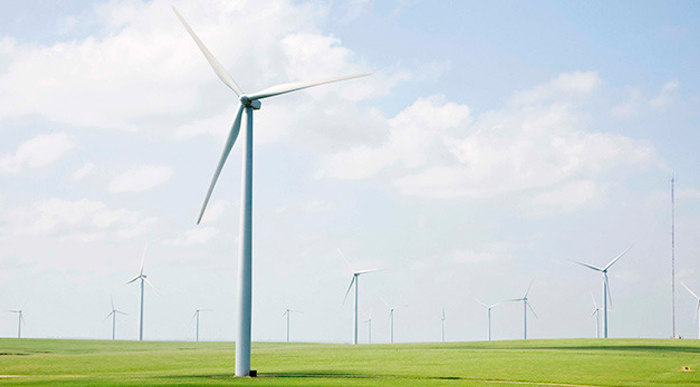The world’s six large multilateral development banks (MDBs) delivered over US$ 28 billion in financing last year to help developing countries and emerging economies mitigate and adapt to the challenges of climate change. The latest figures bring total collective commitments of the past four years to more than US$100 billion.
In 2014, the six banks together provided over US$ 23 billion dedicated to mitigation efforts and US$ 5 billion for adaptation work, according to the fourth joint report on MDB Climate Finance.
The report reveals the important part the MDBs play in delivering development finance in a world shaped by climate change. It was prepared by the African Development Bank (AfDB), the Asian Development Bank (ADB), the European Bank for Reconstruction and Development (EBRD), the European Investment Bank (EIB), the Inter-American Development Bank (IDB) and the World Bank Group (WBG).
Josué Tanaka, EBRD Managing Director, Operational Strategy and Planning, Energy Efficiency and Climate Change, and Portfolio Management, said:
“The climate finance results achieved by the MDBs in 2014 reflect a strong collaboration across the MDBs at a global level and their focused work within their respective areas of operations. The EBRD is particularly pleased to have contributed to our joint MDB results a record level of climate financing during 2014, reaching 34% of the Bank’s total investments. This record level of climate finance has been achieved with a high share of activity in the private sector and in energy efficiency, two crucial areas to scale up climate finance and meaningful carbon emissions reductions over the short to medium term. As COP21 approaches, this focus on scaling up finance while delivering concrete results across a large number of countries becomes ever more relevant.”
Of the total commitments in 2014, 91 percent came from MDBs’ own resources, while the remaining 9 percent, or US$ 2.6 billion, came from external resources including bilateral or multilateral donors, the Global Environment Facility, and the Climate Investment Funds.
Among the regions, South Asia received the largest share of total funding, at 21 percent. Latin America and the Caribbean, non-EU Europe and Central Asia, Sub-Saharan Africa, and East Asia and the Pacific received 17 percent, 16 percent, 15 percent and 10 percent respectively.
About one-third (36 percent) of the total in adaptation funding went into agriculture and ecological resource projects, and 40 percent went into projects involving infrastructure (including flood protection), energy, and the built environment. Renewable energy was the most common mitigation project, drawing 35 percent of the funding. Energy efficiency accounted for 22 percent. The banks also invested heavily in sustainable transport, at 27 percent of the total.
The 2014 report is based on a joint MDB approach for climate finance tracking and reporting that counts only the project components directly providing mitigation or adaptation co-benefits.
Knowing where the money is flowing is critical for reaching areas of opportunity and need, because what gets measured gets managed. The MDBs have harmonized their principles for tracking climate mitigation finance with members of the International Development Finance Club, and have started a similar process for adaptation finance.
The MDBs, together with other public development finance institutions— play a strategic role in smartly deploying scarce government resources and leveraging much larger, and longer-term, private investments.
It is increasingly clear that the finance required for a successful, orderly transformation to a low-carbon and resilient global economy is counted in the trillions and not billions. The immediate challenge of climate finance, while we build the policy framework that will drive investment of the trillions, is to meet the promise made by developed countries to mobilize $100 billion a year by 2020.
With their ability to catalyze public and private funds, the report shows how the MDBs have successfully attracted and deployed climate financing to support low-carbon resilient growth in developing countries and emerging economies.
The report provides key data on climate finance flows and is expected to inform discussions at the Third International Conference on Financing for Development in Addis Ababa next month, and the UN climate change negotiations (COP21) in Paris at the end of the year.


